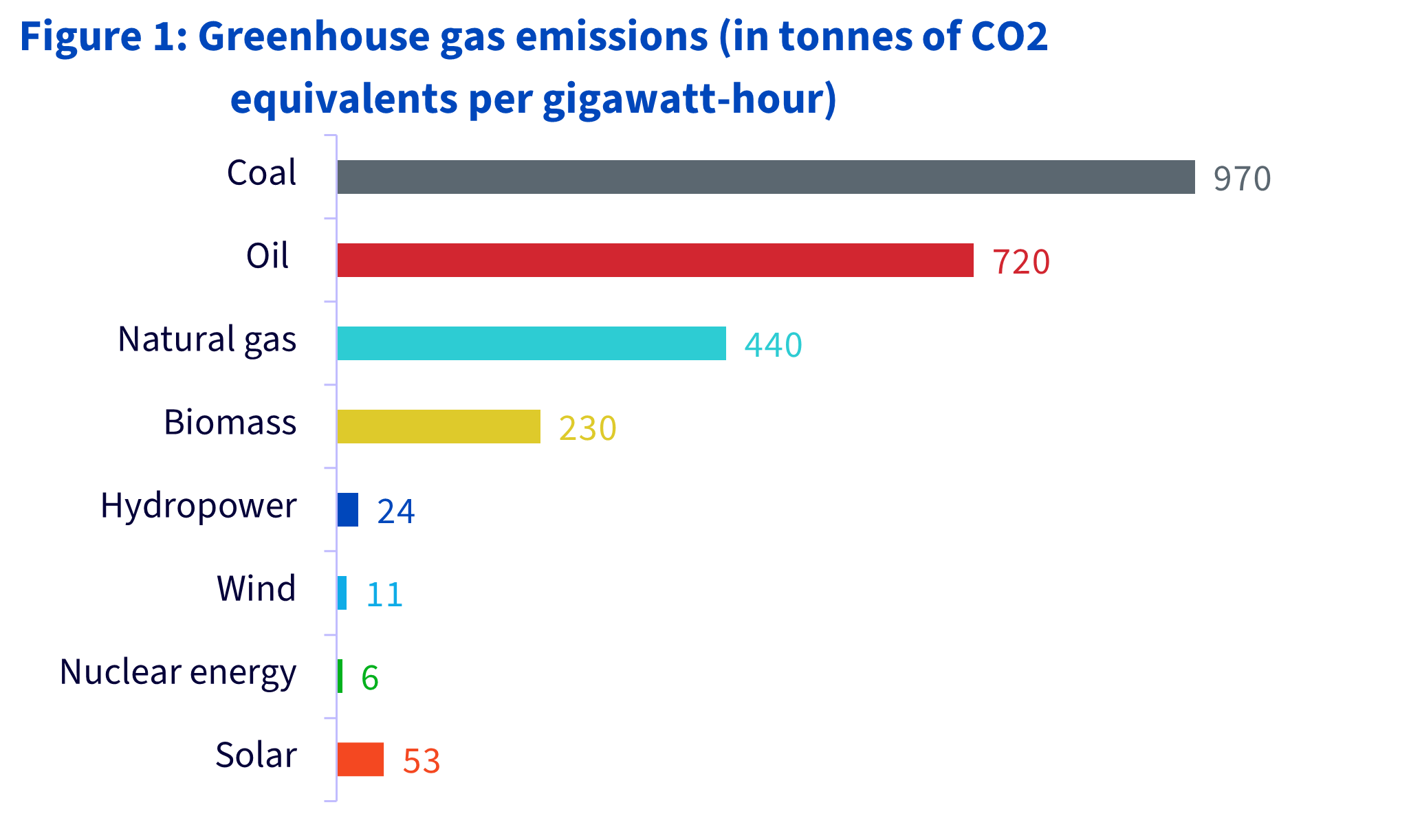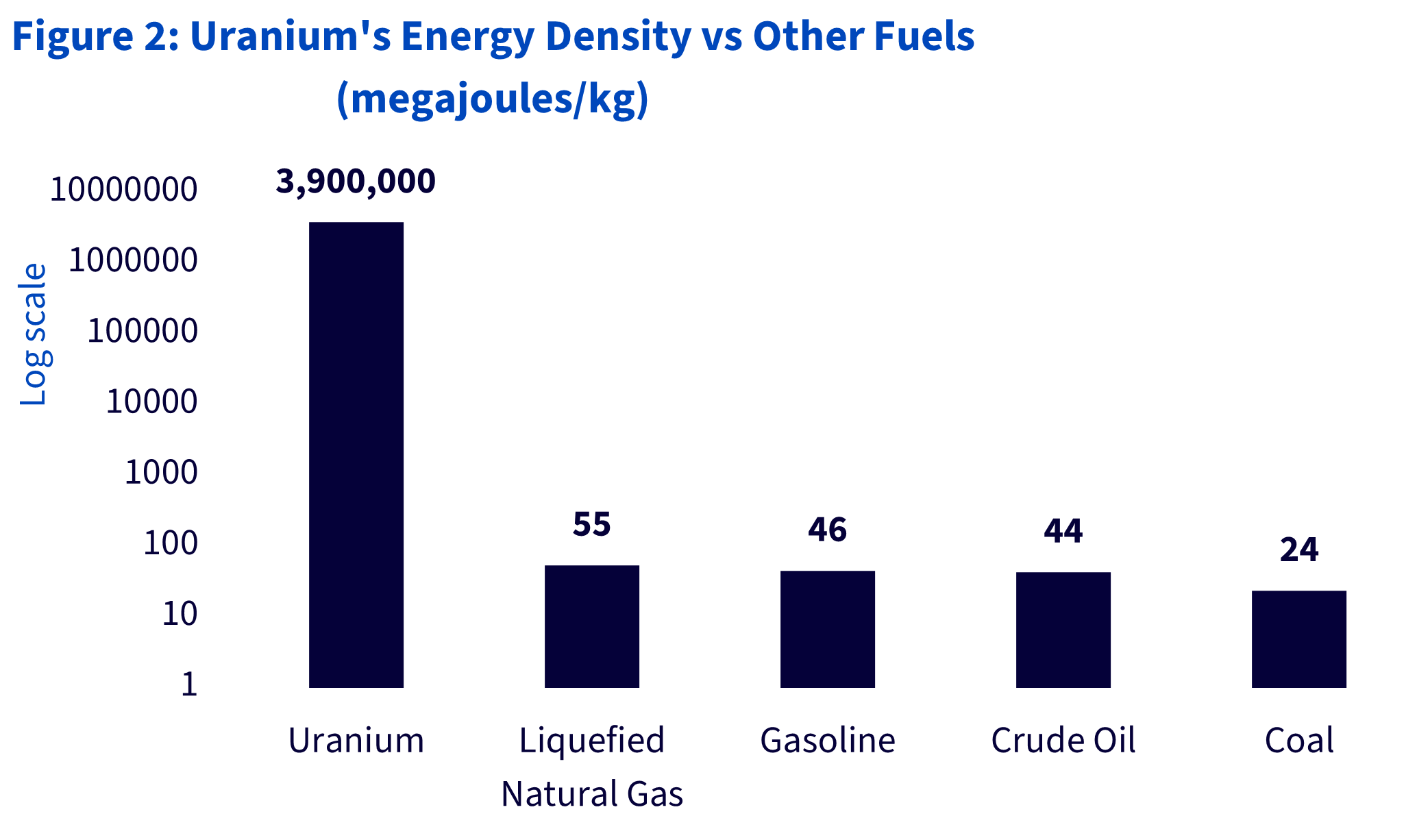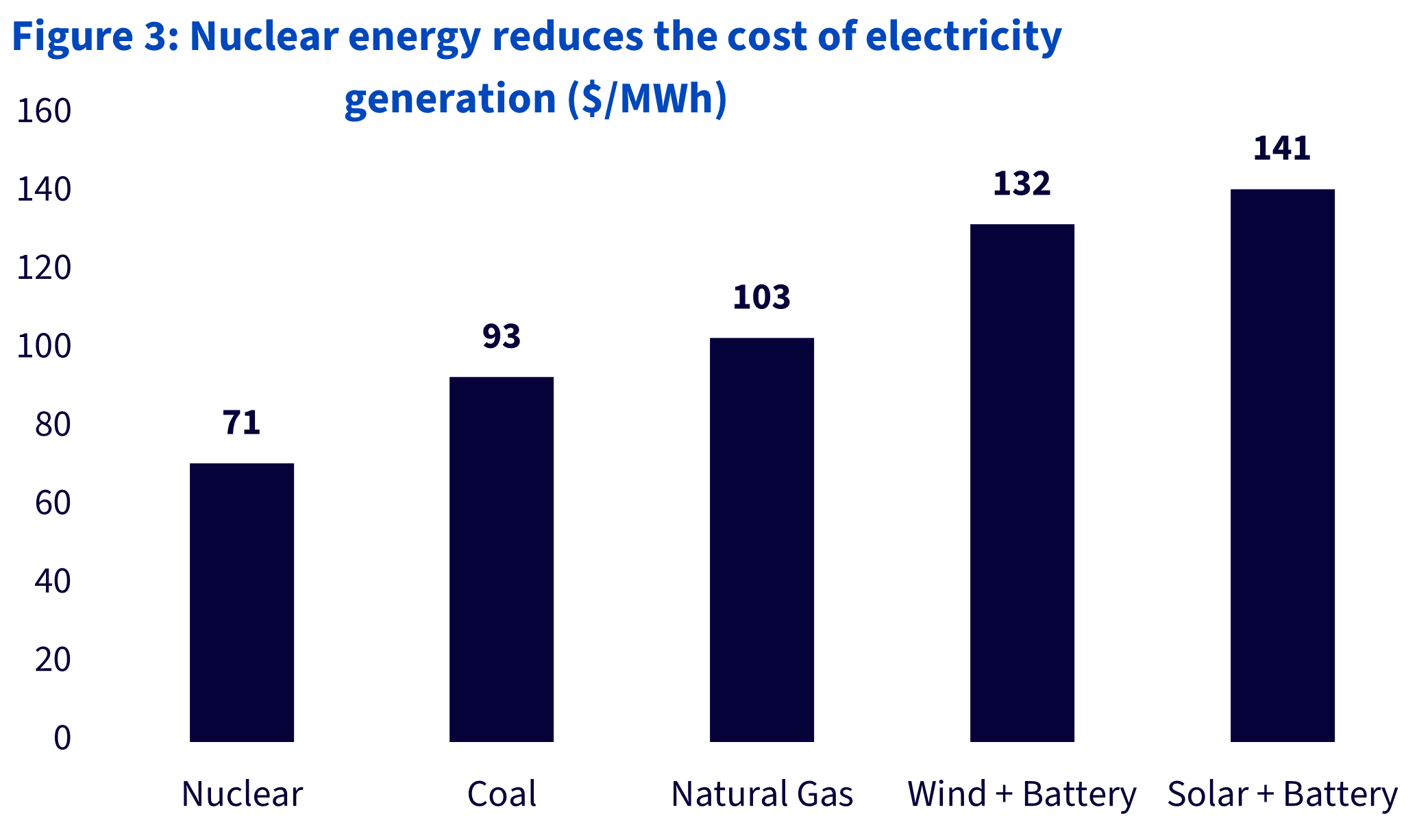This article was originally published by WisdomTree on 20 October 2025. Written by Mobeen Tahir.
Belangrijkste opmerkingen
- It’s clean – Low-carbon, with only steam rising from its towers.
- It’s efficient – Tiny amounts of uranium power entire cities.
- It’s cutting-edge – Modern reactors bring safety, speed, and flexibility.
- It’s cheap – Costs fall with scale, as China has shown.
- It’s all the rage – Governments and big tech are going nuclear.
In the control room, a sailor sits at the sonar console with headphones on. He listens carefully for any trace of an acoustic signal. Distinguishing between background noise, whale calls, or the sound of another submarine is the crucial task assigned to him. He is one of 135 sailors on board, each with a unique role but all equally important.
This is the USS Oregon, a naval submarine that can be deployed at sea for six to seven months. It produces its own fresh water through distillation and only needs to return to shore to resupply food and give its sailors rest. Never to refuel.
The USS Oregon is one of many nuclear-powered submarines in the US Navy. Its nuclear core is designed to last the entire life of the submarine – more than three decades. Nuclear propulsion not only frees it from refuelling, but the absence of exhaust gases compared to diesel-electric submarines also gives it a stealth advantage.
Nuclear power has the ability to rewrite how we interact with energy. The world is waking up to this realisation and it has the potential to alter our future. This blog post outlines five reasons to be excited about nuclear energy.
It’s clean:
Can the world’s rapidly rising energy needs be met with a very low carbon source of power? Yes, they can. When it comes to greenhouse gas emissions from electricity generation, nuclear’s credentials even outshine solar, hydropower and wind (see figure 1). What people see rising from the large cooling towers at nuclear plants is steam, not smoke. The visible plumes, although dramatic, are simply clouds of condensed water – harmless to the environment.

Even nuclear waste, which many people worry about (and which The Simpsons has helped caricature as glowing green sludge leaking out of barrels), is not green at all. It is usually solid, and used fuel rods are stored first in heavily shielded water pools and later in dry casks. Finland is leading the way with its Onkalo facility, now under construction. Its deep underground repository is designed to safely store high-level nuclear waste in stable bedrock tunnels for thousands of years.
It’s efficient:
The fuel for nuclear energy, uranium, does need to be mined. As the industry often puts it, a tonne of coal produces the same energy as uranium the size of a jellybean. In other words, far less uranium is required. The energy density of this remarkable element is millions of times greater than fossil fuels (see figure 2). This is the potential the world is now turning to more seriously.

Efficiency also shows up in land use. Nuclear power requires 27 times less land per unit of energy than coal and 34 times less than solar photovoltaic (PV), making it one of the most space-efficient energy sources available1.
It’s cutting-edge:
Large reactors have become far more advanced over the decades. Passive safety features that cool the reactor without human intervention reduce the risk of accidents. Digital controls improve monitoring and greater fuel efficiency means less uranium is needed and less waste is produced.
Large reactors aren’t the only way forward. Small modular reactors are attracting growing attention because they could be game changers. Their modular design means they can be built in factories, deployed faster and scaled up as demand grows. They promise long refuelling cycles thanks to high fuel efficiency, and like large reactors, they incorporate advanced passive safety systems. Crucially, they can also be placed close to sources of high energy demand, such as data centres.
Companies like Oklo are making waves with plans to deploy the first Aurora powerhouse in the US as soon as 2027. Its design also uses recycled nuclear fuel – a budding but exciting innovation.
It’s cheap:
When it comes to the cost of electricity generation, nuclear offers some of the strongest credentials. It averages around $71 per megawatt-hour, compared with $93 for coal and $103 for natural gas (see figure 3).
But what about the cost overruns and delays that often make headlines? It’s true, they happen. Yet the issue is not with the technology itself but with how infrequently most countries have built reactors in recent decades. A lack of standardised designs and established supply chains has been the main culprit.

China, by contrast, has increased its nuclear capacity fivefold in the last 15 years by developing supply chains, standardising designs and building reactors at scale to capture knowledge and expertise. As other countries take inspiration from this blueprint, they too are likely to benefit from economies of scale.
It’s all the rage:
Since late 2024, the nuclear renaissance has well and truly ignited. At the United Nations Climate Change Conference in 2023, 25 countries pledged to triple global nuclear capacity by 2050, with another six joining the pledge the following year. The US has gone further, with executive orders from President Trump aiming to quadruple America’s capacity within just 25 years. Extending existing plants, reopening closed ones, building new reactors, advancing SMRs, and creating a more favourable regulatory regime are all on the table. More and more countries are picking from that menu of options.
Equally, big tech has set a chain reaction in motion with bold plans to run their energy-hungry data centres on nuclear power. From Microsoft to Amazon, Google to Meta, hyperscalers are turning to nuclear to secure sustainable and reliable energy for their technological ambitions.
When both governments and hyperscalers go nuclear, you know the technology has reached a tipping point.
Conclusie
For many years, nuclear energy faced a brand image problem. Now it is reinventing itself. Rapidly rising energy needs, environmental pressures, technological advances and shifting public sentiment have made the world realise what a colossal mistake it would be to ignore the abundant power of this source. Nuclear can solve many of the world’s toughest energy challenges. The renaissance is only just beginning. The change it will bring to the world and the investment opportunities it will create are exciting to consider.
If it can make a submarine energy independent, imagine the freedom it could give to everything else.
1 Our World in Data, World Economic Forum, 2022.
De informatie op mexem.com is uitsluitend bedoeld voor algemene informatiedoeleinden. Ze mag niet worden beschouwd als beleggingsadvies. Beleggen in aandelen houdt risico's in. De prestaties van een aandeel in het verleden zijn geen betrouwbare indicator voor de toekomstige prestaties. Raadpleeg altijd een financieel adviseur of betrouwbare bronnen voordat u beleggingsbeslissingen neemt.
Read the original article on WisdomTree.






